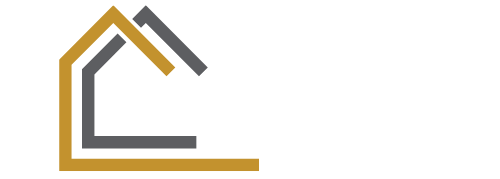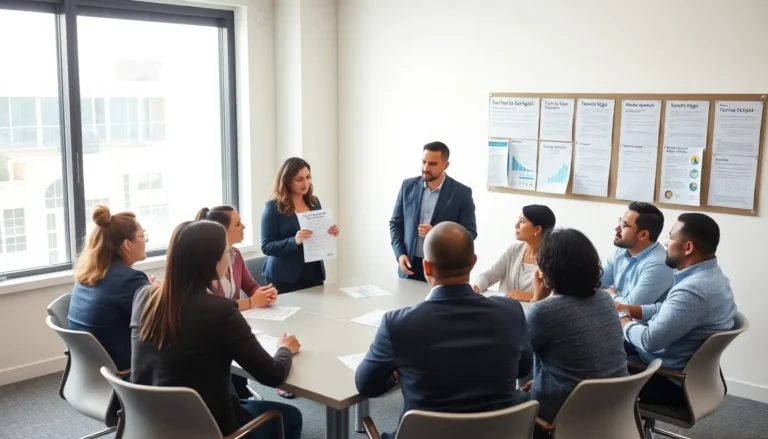Managing rental properties involves more than just collecting rent. Effective rental property maintenance is crucial for ensuring tenant satisfaction and maximizing property value. Landlords who prioritize maintenance not only foster long-term relationships with tenants but also protect their investments from costly repairs down the line.
From routine inspections to emergency repairs, understanding the essentials of property upkeep can save time and money. Whether it’s addressing plumbing issues or maintaining landscaping, a proactive approach to maintenance sets successful landlords apart. By implementing a solid maintenance plan, property owners can create a welcoming environment that attracts and retains quality tenants.
Table of Contents
ToggleImportance Of Rental Property Maintenance
Effective rental property maintenance is critical for maintaining tenant satisfaction and safeguarding property value. Landlords who prioritize maintenance create positive living conditions that benefit both tenants and owners.
Enhancing Tenant Satisfaction
Enhanced tenant satisfaction occurs when landlords address maintenance needs promptly. Timely repairs and regular inspections show tenants that their well-being matters, fostering trust and a sense of security. Comfortable living conditions lead to longer lease durations, reducing turnover rates and vacancy costs. Satisfied tenants are also more likely to recommend the property to others, boosting occupancy rates.
Protecting Your Investment
Protecting the investment in rental properties relies on consistent maintenance. Neglecting upkeep can lead to significant repair costs over time, as minor issues escalate into major problems. Regular maintenance helps avoid costly emergencies and preserves the property’s market value. Additionally, well-maintained properties often command higher rental rates, maximizing revenue potential for landlords. Implementing a structured maintenance plan forms a solid foundation for both immediate and long-term financial benefits.
Common Maintenance Issues

Common maintenance issues in rental properties include plumbing problems and electrical failures, both of which can significantly impact tenant satisfaction and property value.
Plumbing Problems
Plumbing problems often occur due to aging systems, leaks, or insufficient maintenance. Common issues include:
- Leaking faucets: Dripping faucets waste water and increase utility bills.
- Clogged drains: Blockages hinder drainage, causing inconvenience for tenants.
- Running toilets: Continuous running can inflate water bills and indicate potential issues.
- Burst pipes: Severe cold or aging materials can lead to pipe bursts, causing extensive damage.
Addressing plumbing issues promptly can prevent escalation and mitigate water damage risks. Regular inspections help identify potential problems before they affect tenants.
Electrical Failures
Electrical failures in rental properties can pose safety risks and lead to tenant dissatisfaction. Common electrical issues include:
- Tripped circuit breakers: Frequent tripping may indicate overloaded circuits or faulty wiring.
- Flickering lights: This can signal a loose connection or a failing fixture.
- Non-functioning outlets: Non-working outlets limit the use of appliances and electronics.
- Exposed wires: This can be dangerous and poses a significant safety hazard.
Timely repairs of electrical failures enhance safety and improve tenant comfort. Regular electrical system evaluations can identify weaknesses and prevent issues from arising.
Preventive Maintenance Strategies
Implementing preventive maintenance strategies helps landlords minimize costly repairs and enhance tenant satisfaction. Two key areas of focus include regular inspections and seasonal maintenance tasks.
Regular Inspections
Regular inspections play a crucial role in identifying potential issues before they escalate. Landlords should conduct property inspections every six months to evaluate the condition of critical systems.
- Identify deficiencies: Regular inspections help discover problems like leaks or structural damage, allowing for timely repairs.
- Assess safety standards: Evaluating safety features, such as smoke detectors and carbon monoxide alarms, ensures they are functioning properly.
- Review exterior conditions: Inspecting roofs, gutters, and siding can prevent weather-related damage and other long-term issues.
- Document findings: Keeping thorough records of inspections provides a timeline that helps with future evaluations and improvements.
Seasonal Maintenance Tasks
Seasonal maintenance tasks are essential for adapting properties to changing weather conditions. Addressing these tasks on a seasonal basis enhances long-term property health.
- Winter preparations: Winterizing properties includes checking heating systems, insulating pipes, and clearing gutters to prevent ice dams.
- Spring maintenance: Spring tasks should focus on landscaping, ensuring drainage systems are functioning, and addressing any winter damage.
- Summer care: Summer maintenance involves servicing air conditioning units, checking for pests, and cleaning outdoor spaces to enhance curb appeal.
- Fall readiness: Fall tasks include inspecting roofs and chimneys, flue cleaning, and ensuring heating systems are operational ahead of winter.
By emphasizing regular inspections and seasonal maintenance tasks, landlords can create a comprehensive preventive maintenance strategy that safeguards their investments and ensures tenant contentment.
Choosing The Right Maintenance Service
Choosing the right maintenance service is vital for ensuring effective property upkeep. Evaluating qualifications and understanding costs contributes to making informed decisions.
Assessing Qualifications
Evaluating qualifications ensures that maintenance services meet industry standards. Verify licensing, insurance, and certifications to confirm legitimacy. Ask for proof of experience in managing rental properties similar to the one in question. Research customer reviews and testimonials to gauge satisfaction levels from previous clients. Prioritize companies that offer a comprehensive range of services, such as plumbing, electrical work, and general repairs. Ensure availability for emergency services can address issues promptly.
Understanding Costs
Understanding costs provides clarity in budgeting for maintenance services. Request detailed estimates that outline labor and material expenses. Compare quotes from multiple service providers to ensure competitive pricing. Consider the long-term value of preventive maintenance versus reactive repairs; proactive strategies often lead to cost savings over time. Evaluate whether the maintenance provider offers service contracts, which could reduce overall expenses and ensure regular upkeep. Factor in the potential cost of neglecting maintenance, which can lead to significant future repairs.
DIY Maintenance Tips
DIY maintenance tasks can save landlords time and money while ensuring properties remain in top condition. Below are essential tools and simple repairs that every landlord can manage.
Essential Tools Every Landlord Should Have
- Basic Hand Tools
- Screwdrivers: Flathead and Phillips to tighten or remove screws.
- Hammer: For hanging fixtures or making repairs.
- Pliers: To grip, twist, and cut wires or fasteners.
- Power Tools
- Cordless Drill: For drilling holes and driving screws quickly.
- Saw: A circular saw for cutting wood and other materials.
- Measuring Tools
- Tape Measure: For accurate measurements of spaces and materials.
- Level: To ensure surfaces and structures are even.
- Safety Gear
- Gloves: Protect hands from sharp objects and chemicals.
- Safety Glasses: Shield eyes during repairs and maintenance tasks.
- Maintenance Supplies
- Plumber’s Tape: To seal threaded plumbing connections.
- Caulk: For sealing gaps and cracks in bathrooms and kitchens.
Simple Repairs Landlords Can Handle
- Fixing Leaky Faucets
- Replace washers or O-rings to reduce dripping.
- Unclogging Drains
- Use a plunger, or a drain snake to remove blockages in sinks and tubs.
- Changing Light Bulbs
- Replace burned-out bulbs with appropriate wattage to improve lighting.
- Painting Touch-Ups
- Apply touch-up paint to walls and trim to maintain appearance.
- Replacing Air Filters
- Swap out HVAC filters every 1-3 months to ensure optimal air quality.
- Repairing Cabinet Screws
- Tighten or replace screws in kitchen or bathroom cabinets to secure them.
- Testing Smoke Detectors
- Replace batteries regularly and check functionality to ensure safety.
By keeping essential tools on hand and tackling simple repairs, landlords can maintain their properties effectively and promote tenant satisfaction.
Effective rental property maintenance is crucial for landlords aiming to protect their investments and enhance tenant satisfaction. By adopting a proactive approach and addressing issues promptly, property owners not only save on costly repairs but also foster long-lasting tenant relationships.
Investing in regular inspections and seasonal maintenance ensures properties remain in top condition while attracting quality tenants. With the right tools and a solid maintenance plan, landlords can handle simple repairs themselves, further promoting tenant contentment.
Ultimately, a commitment to maintenance translates into higher occupancy rates and increased revenue potential, making it an essential aspect of successful property management.




